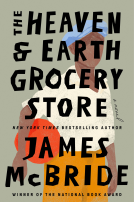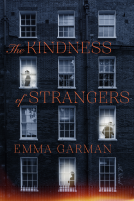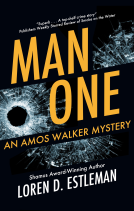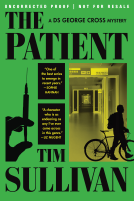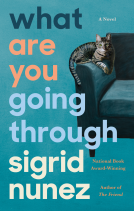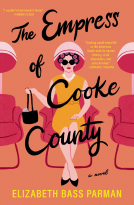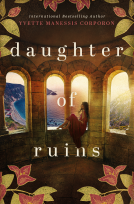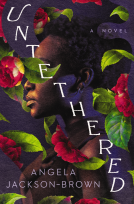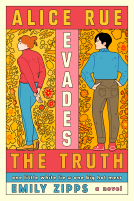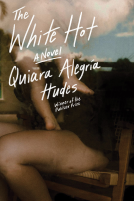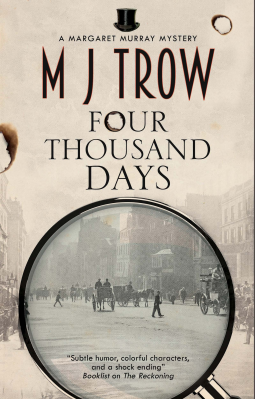
Four Thousand Days
by M.J. Trow
This title was previously available on NetGalley and is now archived.
Send NetGalley books directly to your Kindle or Kindle app
1
To read on a Kindle or Kindle app, please add kindle@netgalley.com as an approved email address to receive files in your Amazon account. Click here for step-by-step instructions.
2
Also find your Kindle email address within your Amazon account, and enter it here.
Pub Date Feb 01 2022 | Archive Date Jan 31 2022
Talking about this book? Use #FourThousandDays #NetGalley. More hashtag tips!
Description
October, 1900. University College, London. When the spreadeagled body of one of her students is discovered in her rented room shortly after attending one of her lectures, Dr Margaret Murray is disinclined to accept the official verdict of suicide and determines to find out how and why the girl really died.
As an archaeologist, Dr Murray is used to examining ancient remains, but she’s never before had to investigate the circumstances surrounding a newly-dead corpse. However, of one thing Margaret is certain: if you want to know how and why a person died, you need to understand how they lived. And it soon becomes clear that the dead girl had been keeping a number of secrets. As Margaret uncovers evidence that Helen Richardson had knowledge of a truly extraordinary archaeological find, the body of a second young woman is discovered on a windswept Kent beach – and the case takes a disturbing new twist …
A Note From the Publisher
Available Editions
| EDITION | Other Format |
| ISBN | 9781780291345 |
| PRICE | $28.99 (USD) |
| PAGES | 224 |
Average rating from 36 members
Featured Reviews
 Reviewer 266180
Reviewer 266180
Bursting With Atmospherics…
The first in the Margaret Murray series of mysteries finds archaeologist and sometime amateur sleuth, Margaret, with a body to contend with. Set 1900, London, at University College, this mystery is bursting with atmospherics, a credible cast and an intriguing storyline. Clearly well researched the author has done a super job in bringing the cast to life. Witty, dry humour laces the plot and seals the deal. Very enjoyable reading.
 Media/Journalist 519183
Media/Journalist 519183
Four Thousand Days is set at the beginning of the 20th century in and around University College London; but it isn't dry and dusty. There are plenty of academic jokes (I like the Jeremy Bentham ones), but they don't take away from the story if they're not to your taste.
(Honorary) Dr Margaret Murray is the main character: an archaeology lecturer, clever, unconventional, small in size but big in character. She's concerned when a student of hers is murdered and enlists the likeable Constable Crawford to help her solve the mystery. Then retired detective Edmund Reid gets involved. Who's killing people involved in a Roman dig, and why?
There's a fine sense of place, with period details bringing 1900s London alive. Flashes of delightful dry humour enliven the authorial voice, especially when describing the workings of Margaret's mind.. And I enjoy this version of Edmund Reid, short, bearded, balding, most unlike the Ripper St Reid.
So far so good. But there are minus points.
The opening is confusing, which is not the best start.. Who are these people? When is it set? I had to trust that it would improve, and it did, but flicking through this book in a library or bookshop I'm not sure I'd have bothered to go on.
The pacing is patchy. It can gallop along, with plenty of surprises and the momentum to keep the reader eager to find out what happens next. But there are too many ''humorous' scenes with students talking to one another, which slow things down, distract, aren't funny, and don't seem to add anything to the plot. (And I got fed up with so many women students giving up their studies.)
It's the ending that lets it down most, for me. Why just drop in the fact that the character who turns out to be the murderer has killed before as a throwaway snippet of reported thought? Maybe it was flagged enough for other people to tell, but not for me. It's far too tell-y and, frankly, feels like cheating. Though Margaret's sang-froid at the time is a treat to read.
And her decision at the end is deeply unsatisfactory, though I understand why it had to be that way (there will be more books in this series). It doesn't seem in character. It also explains the otherwise obscure title.
In spite of these drawbacks, I did enjoy the book. Will I read the next one? Probably. But I hope these are glitches that will be ironed out by book two.
A thoroughly entertaining mystery story. Margaret Murray is a lecturer in archeology at University College, London in 1900. When one of her students is found dead, she sets out to find the truth, aided by a young police constable, a retired detective inspector, the owner of the local café and some of her students
As usual M J Trow writes an easy to read narrative backed with a gentle humour. The characters are distinctive and very likeable. A delightful read and I look forward to reading the next in the series.
224 pages
5 stars
Constable Adam Crawford is settling a dispute in front of a tenement in the middle of the night when it is decided to visit the young woman who is the source of all the fuss. Crawford finds her dead body in the residence.
DI Athlegar Blunt who has a superior attitude immediately dismisses the young woman’s death as suicide. He goes on to say that she was a prostitute - without any evidence. But Constable Adam Crawford who found the body believes otherwise. The young woman’s name was Helen Richardson (a/k/a Helen Groves). and she was an archeology student in Margaret Murray’s section.
When Margaret hears of her death, she feels duty bound to look into it. She, like Constable Crawford, doesn’t believe it was a suicide.
Margaret begins her investigation with the help of some unlikely people, including retired Inspector Edmund Reid. Then another woman archeology student is found murdered on the beach. She apparently was “on the game” as well as Helen.
When a professor at the college is murdered in his office, Margaret finds him. DI Blunt answers the call, but fortunately Inspector Reid shows up and wrests the case from the bumbling Blunt. (Perfect name for the idiot, if you ask me.)
When Blunt arrests the wrong man for the crimes, Margaret, Crawford, Reid and the others are in a race to save him.
The murderer turns out to be a surprise - at least for me. The reason for the murders is explosive.
This is a delightful little novel. It is well written and plotted. It reads in a linear fashion and the transitions are flawless. I thoroughly enjoyed this book. I liked Margaret a great deal (and her owl), and Reid. They’re made for each other in my opinion. Mr. Trow writes non-fiction as well and they are those that I have previously read. This is my first work of fiction of his. I surely hope to read more about Margaret Murray. I was very surprised and pleased to learn that she was a real person.
I want to thank NetGalley and Severn House for forwarding to me a copy of this great book for me to read, enjoy and review. The opinions expressed here are solely my own.
 Amy O, Librarian
Amy O, Librarian
Indiana Jones in a skirt. That's M.J. Trow's latest protagonist, Margaret Murray.
The only female lecturer in the archaeology department at University College, London in 1900, Murray pulls out the magnifying glass when one of her students is murdered.
Murray actually was an archaeology lecturer and many of the people she asks for help are real too: The investigator in the Jack the Ripper case, Rudyard Kipling, William Flinders Petrie, Jeremy Bentham. She even visits the founder of the Salvation Army to research prostitution.
Trow's Murray is liberated, forthright, witty and brilliant. Her investigation turns up an artifact that leads to a shocking, satisfying conclusion.
Bring on book two!
 Jan T, Reviewer
Jan T, Reviewer
1900, London, archaeologist, university, professor, ex-cop, murder, murder-investigation, historical-fiction, historical-figures, historical-research, history-and-culture, historical-setting, amateur-sleuth, sly-humor, class-consciousness, private-investigators*****
Professor Margaret Murray and Egyptologist Flinders-Petrie were real as is University College, London. The problems of class distinction and severe bias against women mitigated a little since then. The story is good whodunit fiction.
The publisher's blurb is a good hook, and I don't do spoilers, but I loved this fun read that has so many things that interest me (law enforcement, amateur sleuths, archaeology, sleuthing with due diligence) and even has a little romance going on between a university student and a constable. Awaiting the next in series!
I requested and received a free e-book copy from Severn House via NetGalley. Thank you!
 kATHLEEN G, Reviewer
kATHLEEN G, Reviewer
Constable Adam Crawford doesn't believe that Helen committed suicide so he approaches Dr Margaret Murray (a real person!) to help figure out what truly happened to her student. Turns out Helen had secrets and that her murder is only the start of an unusual case involving archeological finds and academic rivalries. It's an interesting and atmospheric read. I did a little more research on Murray- what a fascinating woman. Thanks to Netgalley for the ARC. I'm looking forward to the next one.
 Melissa M, Reviewer
Melissa M, Reviewer
The real Margaret Murray was an archeologist, folklore scholar and anthropologist. In Four Thousand Days, M. J. Trow sets her loose at University College, London amidst a group of young students and murder.
The characters are interesting, the setting is wonderful, and the mystery full of red herrings and real clues.
The fictional Margaret Murray is a great addition to the amateur detective ranks, and I hope we get to read more about her.
I voluntarily read and reviewed an advanced copy of this book. All thoughts and opinions are my own.
 Jean K, Reviewer
Jean K, Reviewer
Dr. Margaret Murray, a lecturer at University College in 1900 London, is addicted to dime novels. When Helen Richardson, an attendee at her public lectures on archaeology, is murdered she joins Constable Adam Crawford and Veronica, a student, to find the murderer. The police have closed the case with a verdict of suicide. Crawford is the constable who found the body and he is not satisfied with the ruling. Following clues to a seaside town in Kent, Margaret meets retired Inspector Edmund Reid and discovers signs of a dig. When Reid discovers a second body in the dunes, he joins Margaret and Crawford in London to investigate. The second victim was an archaeology student at Kings’ College and Margaret obtains her notes, which reference the troublemaker Josephus. She had been on the trail of a find that would date back to the early days of Christianity.
Each victim that is tied to their investigation was killed in a different manner - one by poison, one by strangulation and a third victim by bludgeoning. The third victim was a professor at University College. To get past security and negotiate the maze of corridors at the school, the murderer must have had some knowledge of the area. Margaret and her companions must discover the connection before she becomes the next victim.
M.J. Trow has taken the real Margaret Murray and joined her with characters who allow her to shine as an investigator. She calls herself Dr. Murray but she was largely self-taught and had not earned her degree. She is outspoken and persists despite warnings from her superior that she could damage the school’s reputation or be terminated. Young Crawford has not been with the police for long but he shows great promise as an investigator. Edmund Reid was a real police investigator. He is still dealing with the loss of his wife and his retirement, but meeting Margaret and involving himself in the investigation brings him back to life. There are also appearances by Rudyard Kipling and William Booth, the founder of the Salvation Army. Four Thousand Days is listed as the first Margaret Murray mystery and fans of historical fiction will look forward to seeing her return for another adventure. I would like to thank NetGalley and Severn House for providing this book for my review.
 Cathy C, Reviewer
Cathy C, Reviewer
I am sometimes hesitant to read fiction that uses real-life people as characters, but for some reason, I couldn't resist M.J. Trow's Four Thousand Days. Perhaps it was the time period-- 1900, right at the end of Victoria's reign. Perhaps it was the fact that Margaret Murray was a female archaeologist. For whatever reason, I'm glad I picked up this enjoyable historical mystery (and I appreciated the author's The Real Margaret Murray at the end of the book).
Dr. Margaret Murray isn't the only interesting character in the book. There's the handsome Constable Adam Crawford who attends Murray's free archaeology lectures on Fridays and has a keen eye for rooting out clues to solving crimes. There's retired Scotland Yard inspector Edmund Reid, subject of the popular Inspector Dier mystery novels. There's Tom, a former thief and erstwhile chef and server at Murray's favorite watering hole, the Jeremy Bentham. Of Murray's students, the standout for me was Janet Bairnsfather, "the Job of University College," who's much too rigidly proper to fit in well with Murray and her inner circle of students. Even the characters on the periphery are interesting, and sometimes good for a laugh or two, like the Herne Bay Decorum Society, "...a not-very-well-meaning clique of busybodies, largely female...who twitch curtains and look for outrage."
The mystery is a good one, and I was dying to find out what the archaeological find was. When I did learn, I think my jaw hit the floor. (And that was also when I learned the significance of the book title.)
Four Thousand Days is a well-written, thoroughly enjoyable historical mystery, and I'm looking forward to seeing Margaret Murray in the future.
 Marlene H, Reviewer
Marlene H, Reviewer
This has been a week of mostly mysteries – or at least a week of conundrums of one sort or another. Margaret Murray’s first foray into amateur detection fits right in. But I was expecting it to considering how much I enjoyed one of the author’s previous mysteries, The Knight’s Tale.
The process of professional archaeologist and amateur detective Murray becoming involved in this case-that-is-almost-not-a-case is marvelously immersive and feels true to the character. It also does a lovely job of introducing the reader to this time and place, London in 1900 as the new century turns over and a new era is on the horizon.
It also places us squarely into the academic environment of University College – that Godless Institution – at a time when women academics were, shall we say, rather thin on the ground. Murray was (really) one of a kind. Her professional credentials are a bit haphazard, because women weren’t supposed to be what she was. But she’s doing her best – which is quite good – to encourage the women who follow in her wake.
And that’s where this story really kicks off, as one of Murray’s part-time students is a police constable called to the death of another. Constable Crawford is sure it’s murder, while the detective in charge calls it suicide – clearly because he doesn’t want to investigate the death of a prostitute.
That’s where Crawford calls in Murray, and Murray calls in retired Scotland Yard Detective Inspector Edmund Reid – who was the real life copper in charge of the Met’s investigation into the Ripper killings. As Murray and Reid poke their noses into places that someone seriously wishes they shouldn’t, the string of murders gets longer and the tempers of officialdom get shorter.
The trick, or the question, or both, is discovering what the deaths of a part-time student and part-time prostitute in London, a full-time student on an archeological dig in Kent, and the most boring professor in the entire University College have in common will require just the kind of digging that Margaret Murray can’t let go of – even if it kills her.
Margaret Murray (3rd from left) unwrapping a mummy in 1908
Escape Rating A-: Margaret Murray reads like a combination of Amelia Peabody (Crocodile on the Sandbank) and Harriet Vane (Strong Poison), all the better for Murray having been a real person, who really had the kind of background and went on the kind of adventures that make her a perfect fit for this sort of story.
Seriously, even though as a real person thrust into the role of amateur detective she’s a bit more like Nicola Upson’s version of mystery author Josephine Tey in An Expert in Murder – and their real life time periods do overlap – Murray combines Amelia Peabody’s expertise in Archaeology (and a mutual acquaintance with Flinders Petrie) with Vane’s experience walking the halls of academe at a time when women were just grudgingly accepted. At best.
While the case that Murray discovers herself in the middle of – and is nearly done in by – has just a bit of a hint of the puzzle that Mary Russell digs herself into in A Letter of Mary. (That’s a bit of a hint, BTW)
As much fun as it is to speculate about the relationships between the real historical figures that populate this story and seem to be part of Murray’s inner circle of helpers and investigators, it’s the character of Murray herself that makes this so much fun.
Often, in historical fiction of all stripes, in order to make a female character the active protagonist and give them real agency it is necessary to make them a bit anachronistic, outré, or both. They end up not feeling like creatures of their own time in order for us to identify with them in ours.
Murray’s actual biography lets the reader know that she was a person of her time – and yet that she really was doing it all uphill and against the wind, so to speak. Which allows her to speak both to her time and our own.
The real-life Margaret Murray lived to be 100. After reading Four Thousand Days, I would be thrilled to read 100 years of her adventures as an amateur detective – or pretty much anything else she – or her author – decided to turn their hand to!
 jean luc e, Librarian
jean luc e, Librarian
A new series from the talented M. J. Trow always calls for a celebration!
Set in London at the tail-end of Queen Victoria's reign, we meet Margaret Murray, a smart and talented archaeologist who also lectures at University College.
But when the violent death of a female student shatters the peaceful world of Academia, it also opens a large Pandora's box full of secrets, grudges and more violent deaths....
It will be up to Margaret to painstakingly try to untangle the many threads that will lead her to the truth and unmask the vicious killer lurking around the college's grounds...
Cleverly plotted & blessed with a large cast of exquisitely drawn characters, this delightful whodunit kept me guessing all the way to its highly satisfying ending.
A marvellous murder mystery & a captivating piece of historical fiction that deserves to be enjoyed without any moderation! I simply can't wait for the next title....
Many thanks to Netgalley and Severn House for this terrific ARC
I am so glad that I was given the chance to read this terrific book. Trow writes with wonderful style and grace, and her heroine Emem is perfect. Along with her erstwhile assistants Margaret Murray solves a mystery. And an excellent mystery it is. Well done to Severn House and of course MJ Trow for a remarkably humorous and exciting read. My thanks to Netgalley for the opportunity to read Four Thousand Days.
 Librarian 431790
Librarian 431790
A mystery featuring Margaret Murray as investigator is something I couldn't miss. She's an interesting characters and I liked how the author developed the character.
It's a series full of potential, featuring a cast of fleshed out characters.
The solid mystery kept me guessing and I had fun in read in this story.
Can't wait to read the next one.
Recommended.
Many thanks to the publisher and Netgalley for this ARC, all opinions are mine
 Rachel A H, Media/Journalist
Rachel A H, Media/Journalist
1900 London: Police discover a woman’s body in a rented room and it is ruled a suicide – or is it? Why did some people know the woman by one name, while others knew her with a different identity? Dr Margaret Murray of University College is used to dead bodies as an archaeologist, but this one is a lot fresher and formerly one of her part time students. Perhaps it could be to do with something she dug up…
When you open an M J Trow novel you know you are in for a witty page-turner and this is no exception. Dr Margaret Murray was a real person who led a fascinating life so makes for an ideal protagonist for his latest series. University College springs to life as do the mean streets of London and the windswept Kent coast. Dr Murray doesn’t investigate alone, but is helped by an old lag who now owns a popular café, a well respected retired inspector who worked on the Ripper case, one of her female students and a dashing young constable. The bodies start to pile up and there is a race to discover not only whodunit but what on earth Helen Richardson found that is so valuable. You won’t know the significance of the title until the very end…consistently enjoyable and well researched compulsive reading.
I was given an arc of this book by Netgalley and the publisher in exchange for an honest review.
 Elizabeth R, Librarian
Elizabeth R, Librarian
M.J.Trow gives us the first historical mystery Four Thousand Days. for Dr. Margaret Murray, professeor of archaeology in University College, London. She gets involved in the murder of one of her students and more deaths follow. Whodunit? Why? Dr. Murray works with a former policeman, Reid, to follow the track of the archaeological mystery the produced the deaths. Read and enjoy an unusual detective.
A very enjoyable historical mystery with characters worthy of an Agatha Christie novel. The year is 1900 and Margaret Murray is a lecturer in archaeology at University College London, one of few women in academia in any field. When one of the women who attends the department's Friday public lectures is found dead in her rooms, the inspector in charge of the case declares suicide but the beat officer who found her (and who recognizes her because he also attends the Friday public lectures) suspects murder and brings Margaret Murray into the case. During her investigations, Emm Emm (as her students call her) meets and partners up with a retired Scotland Yard detective, as well as a former thief who now runs her favorite tea house. As the body count climbs, they must find the common thread to identify motive and murderer. Also like a good Agatha Christie novel, the ending was unexpected but completely logical. I look forward to book #2 in what looks to be a strong new series!
 David P, Reviewer
David P, Reviewer
I am pushed to think of another modern writer who is more prolific, but yet so consistently readable as MJ Trow. Not only that, until a few years ago he actually ‘worked for a living’ outside of his writing career. He and I walked along one or two shared paths. We went to the same school, but I was a couple of years ahead of him, and neither of us noticed one another’s presence. We both took up a career in teaching, and shared a deep contempt for the corporate management styles in English comprehensive schools. He exploited that in his superb series centred on the world of Peter ‘Mad’ Maxwell, Head of History at a fictional school in the Isle of Wight. I say fictional, but Maxwell was, to all intents and purposes, the author himself. One imagines (and hopes) that the murders in the books were purely imaginary ones, but the troubled and often complex teenagers and preposterous members of the Senior Leadership Team were all too true to life.
Before Maxwell came Trow’s homage to Conan Doyle’s Inspector Lestrade. Bumbling and incompetent in the original books, Lestrade is portrayed by Trow as a decent copper, nobody’s fool, and doing his best, but frequently upstaged by his flashier nemesis from Baker Street. There are also series featuring Kit Marlowe, the Elizabethan dramatist, here recast as one of Gloriana’s secret agents. I have also enjoyed the Grand and Batchelor Victorian mysteries. Trow is a great humorist and punster. mixing comedy and word play with superb plotting and – the real pull, for me – the introduction of real historical characters in to the narrative. In addition he has written extensively in other genres, including True Crime.
Having just realised I am over 200 words into the review without mentioning the book in question, I must get back on task. Margaret Murray was the first celebrated woman archaeologist, and in Four Thousand Days she is at the centre of an intriguing mystery. We are in London, October 1900, and while the Boer War is still very much alive, the Boer leader Paul Kruger has fled to Europe, the ‘game’ is pretty much over, and the first British troops are returning from South Africa.
A young woman is found dead, apparently by her own hand, in a sleazy tenement bedroom. Further investigation reveals that she led at least two different lives, one as a prostitute, but another as a modest and attentive student, a regular attendee at Margaret Murray’s free Friday afternoon lectures at University College London. Another student of Em-Em, (Margaret Murray) Angela Friend, is drawn into the case by her soon-to-be boyfriend, Police Constable Adam Crawford.
Enter another real-life character in the shape of retired copper, Edmund Reid (above). Troubled by the recent death of his wife and his conspicuous failure a dozen years earlier to catch Jack the Ripper, he has resigned himself to a solitary existence down in Hampton on Sea, a village near Herne Bay in Kent. Hampton would eventually be obliterated by erosion and the force of the waves, but an early part of this process – the collapse of a sand dune – reveals to Reid the body of another woman, dead for some time. The fact she was another archaeologist, is too much of a coincidence. It transpires that she was attempting to excavate a Roman coastal fort. What she found – and was murdered for – has the potential to turn Christian history on its head. He teams up with Margaret Murray to solve the mystery. The book’s enigmatic title? All is revealed in the final pages, but I will not spoil it for you.
Trow introduces other historical characters, and one of his many skills is to make us believe that how they behave in his book is just how they were in real life. As in all of his novels, Trow reminds us in Four Thousand Days that his grasp of history is second to none. Add that to his wizardry as a storyteller, and you have a winning combination. Four Thousand Days is published by Severn House and is available now.
Four Thousand Days is the first Margaret Murray mystery by M J Trow. Released 1st Feb 2022 by Severn House, it's 224 pages and is available in hardcover, audio, and ebook formats. It's worth noting that the ebook format has a handy interactive table of contents as well as interactive links. I've really become enamored of ebooks with interactive formats lately.
This is a skillfully written and well researched historical mystery set in late Victorian England. The mystery is very well constructed and engineered. I generally have a good idea by midway through a mystery who did what and to whom (and why) and this one managed to surprise me on several levels. The author does a great job interweaving an engaging mystery around real historical events and characters and it's so skillfully rendered that I wasn't always sure where verifiable fact veered off into fiction.
There's a subtle warm humor and intellectual vibe here. I adore mysteries with sleuths who are academics and this is a promising start to a new series. Although it's not at all derivative, it reminds me in a lot of good ways of PD James' Dalgleish, and Amanda Cross' (Dr. Carolyn Heilbrun's) Kate Fansler novels. Fans of mysteries in academia will find a lot to enjoy. There's also a very slight hint of Miss Marple, although Dr. Murray's not fluffy or harmless in the slightest, she is unflappable and wise to the ways of the world.
Four and a half stars. My (very slight) ding comes from the fact that the secondary characters are legion and so lightly sketched in that I had trouble keeping them straight in my own mind. I look forward eagerly to reading more in this series and from this author.
Disclosure: I received an ARC at no cost from the author/publisher for review purposes.
Readers who liked this book also liked:
James McBride
General Fiction (Adult), Historical Fiction, Literary Fiction
Yvette Manessis Corporon
General Fiction (Adult), Historical Fiction, Women's Fiction
Marie Bostwick
Historical Fiction, Literary Fiction, Women's Fiction
